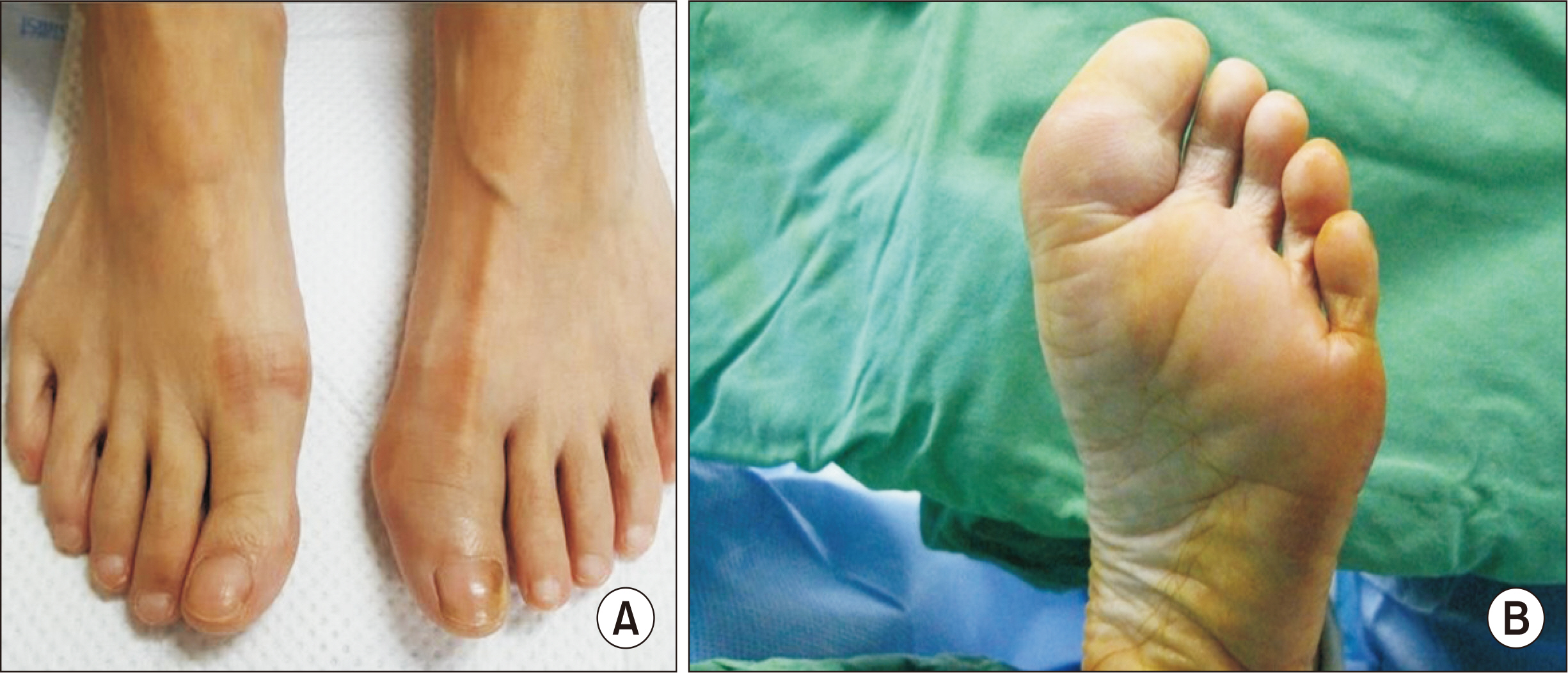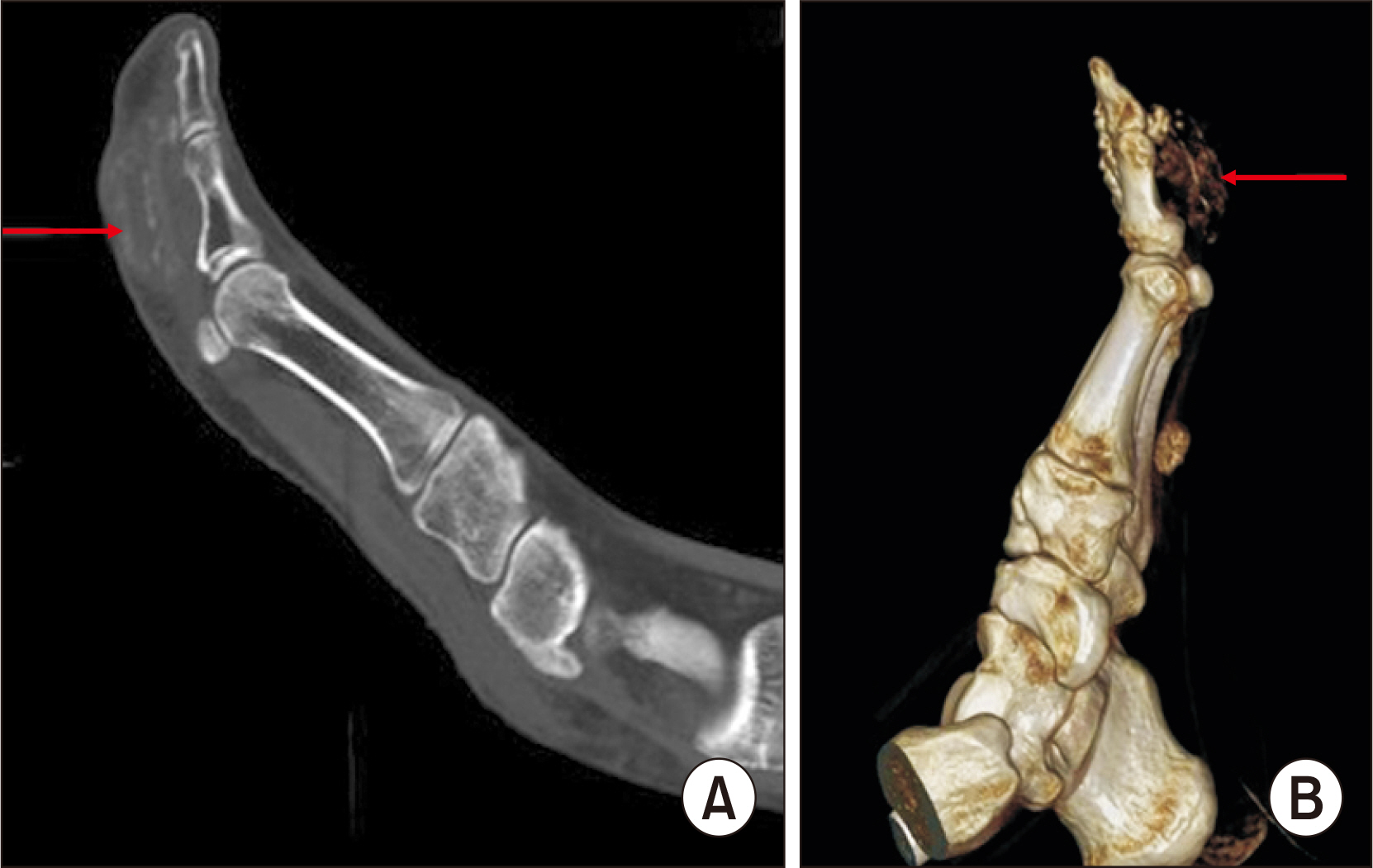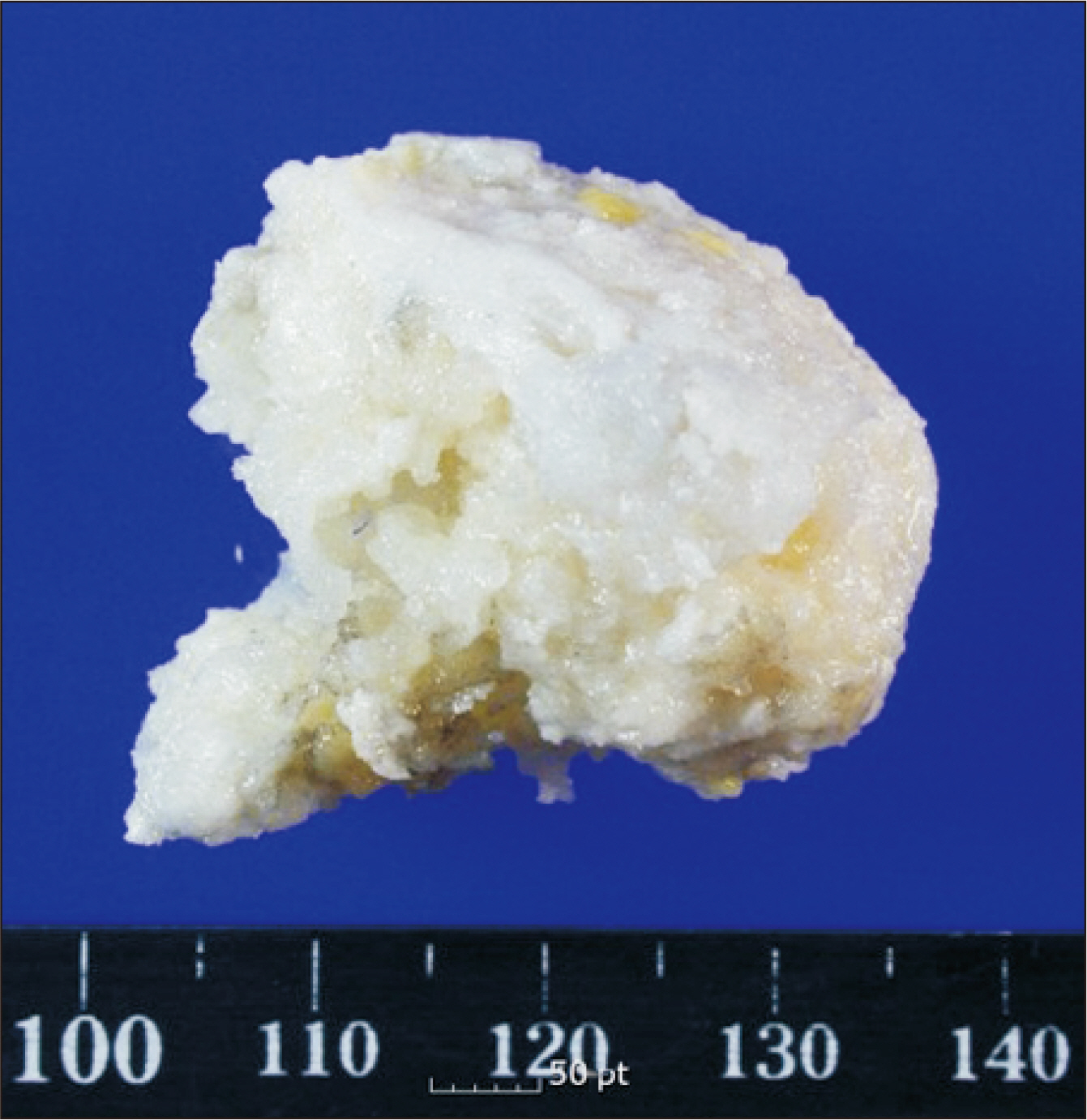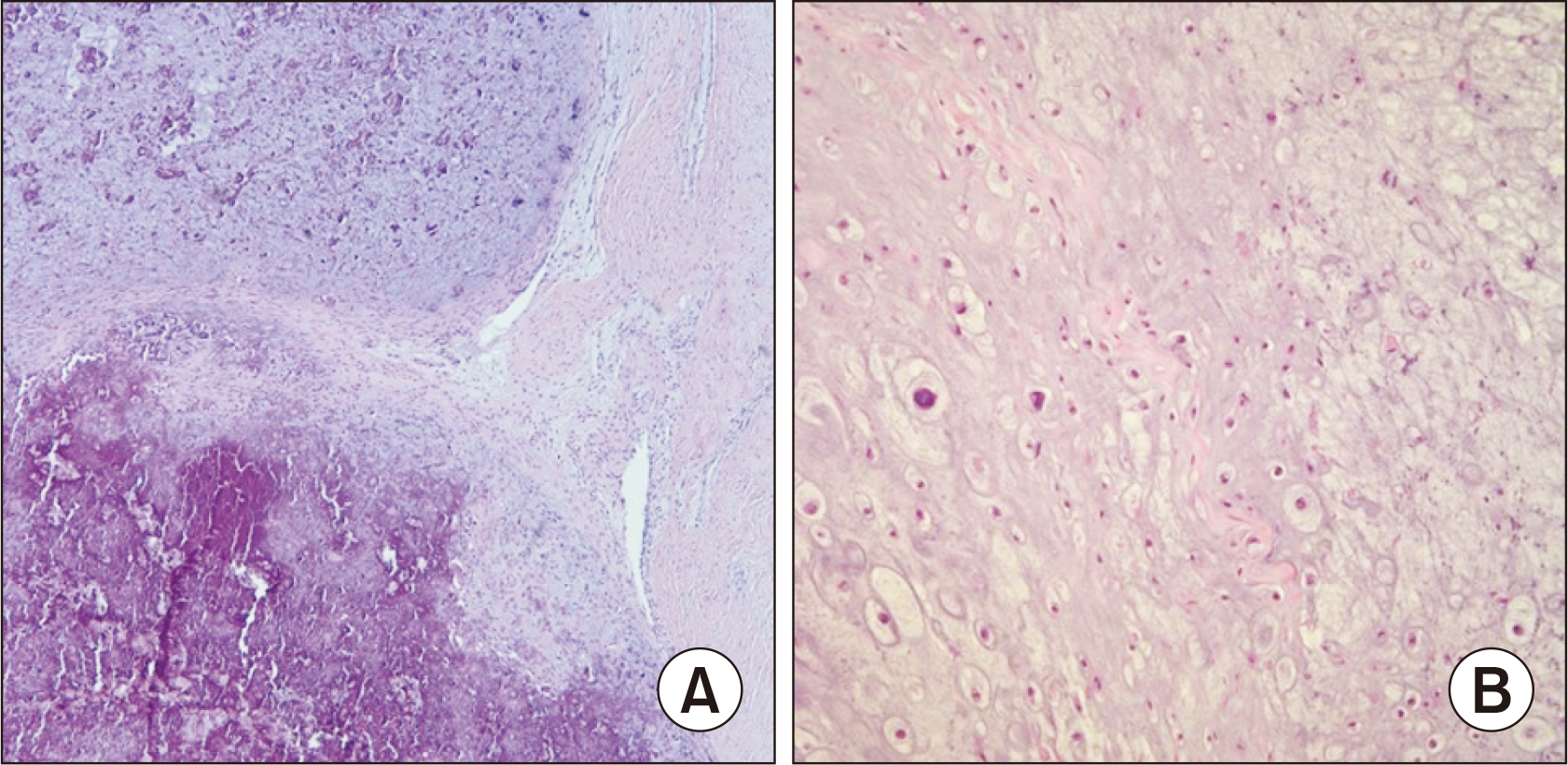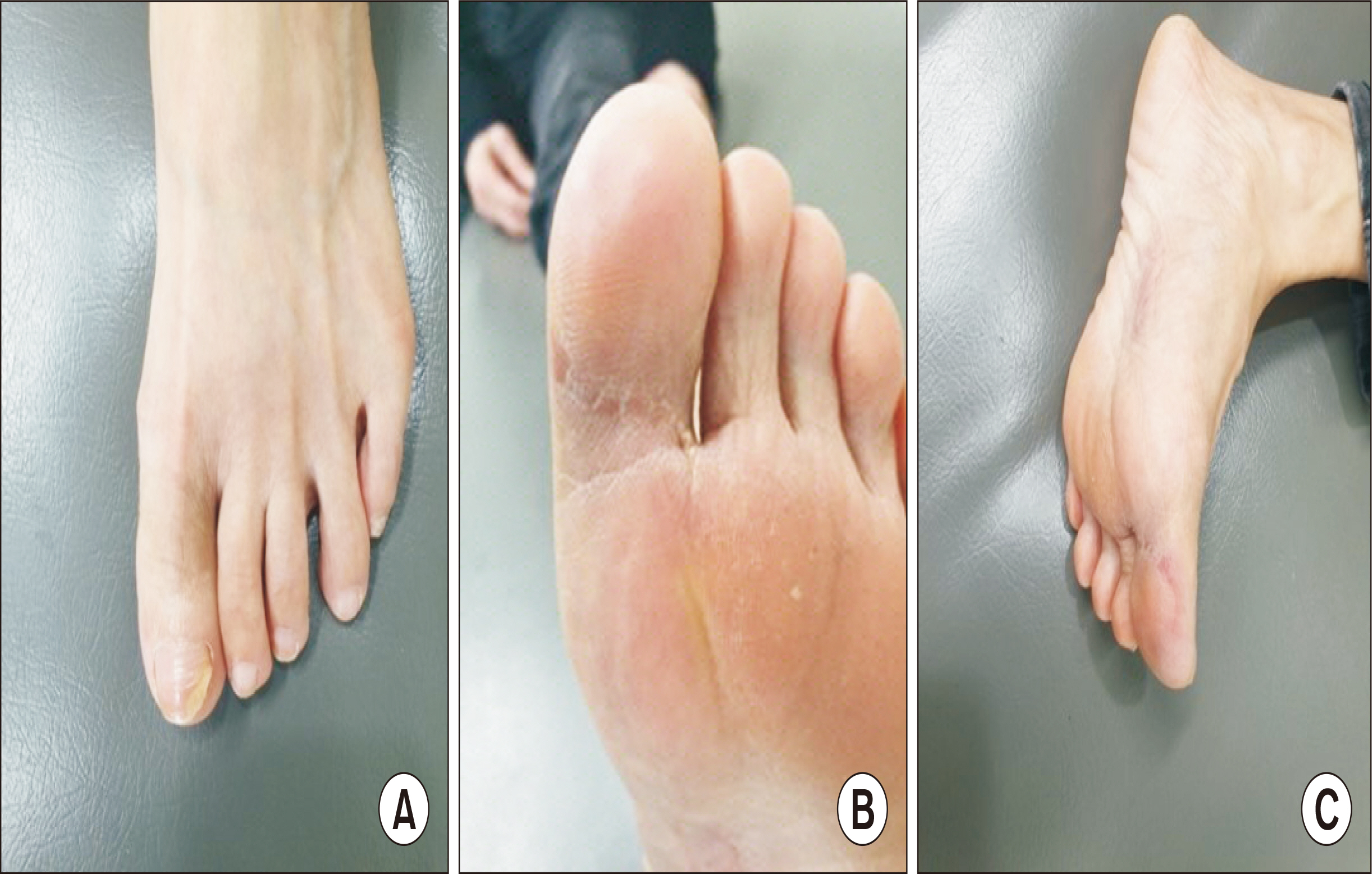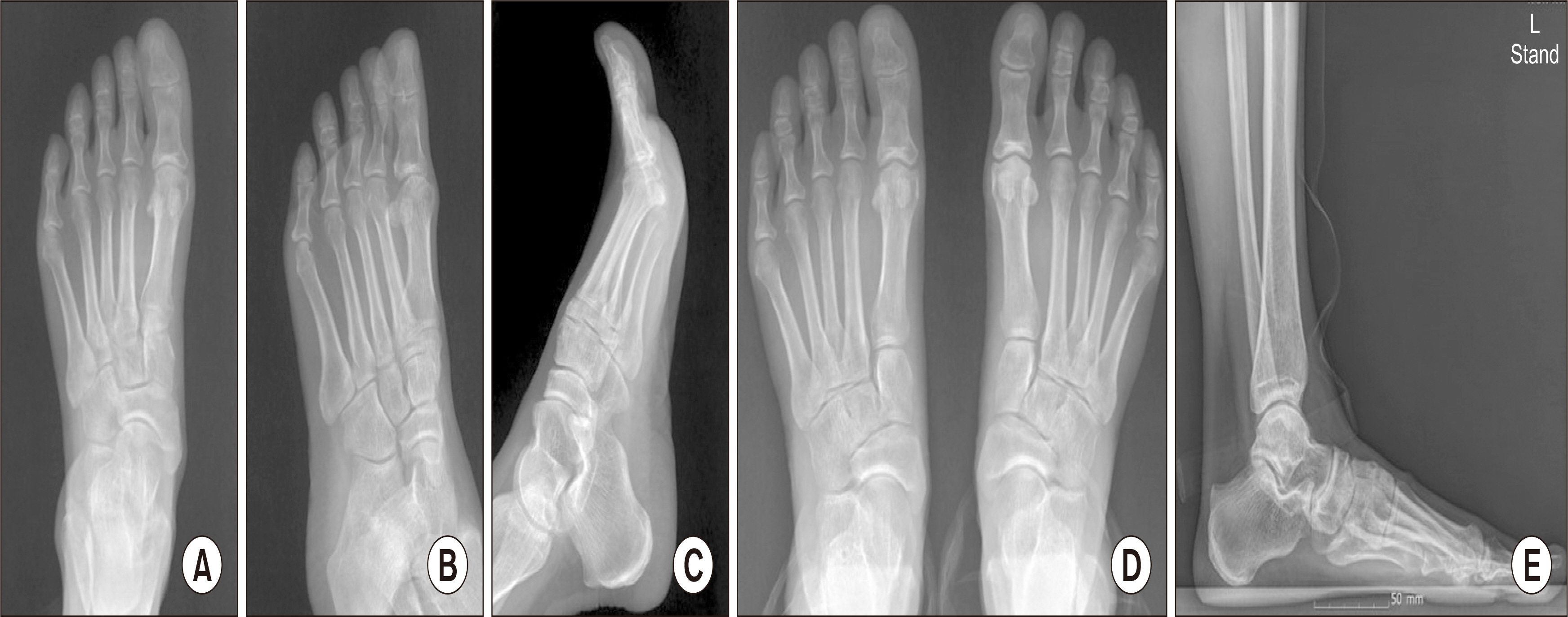J Korean Foot Ankle Soc.
2021 Dec;25(4):195-198. 10.14193/jkfas.2021.25.4.195.
Bizarre Parosteal Osteochondromatous Proliferation of the Proximal Phalanx of the Great Toe: A Case Report
- Affiliations
-
- 1Departments of Orthopedic Surgery , Wonkwang University Sanbon Hospital, Wonkwang University School of Medicine, Gunpo, Korea
- 2Departments of Pathology, Wonkwang University Sanbon Hospital, Wonkwang University School of Medicine, Gunpo, Korea
- KMID: 2523303
- DOI: http://doi.org/10.14193/jkfas.2021.25.4.195
Abstract
- Nora et al. first reported a bizarre parostealosteochondromatous proliferation (BPOP) as a small size bone malformation mainly in the foot and hand in April 1983 that was called Nora’s lesion or Nora’s disease. Nora’s disease is known for its low incidence and is characterized as a benign lesion, without a malignancy or metastasis with different histological, radiological, and clinical features from other common lesions. Several cases of Nora’s disease on the hand, foot, and long bone have been reported in Korea. This paper reports a case of BPOP of the proximal phalanx of the great toe.
Keyword
Figure
Reference
-
1. Nora FE, Dahlin DC, Beabout JW. 1983; Bizarre parosteal osteochondromatous proliferations of the hands and feet. Am J Surg Pathol. 7:245–50. doi: 10.1097/00000478-198304000-00003. DOI: 10.1097/00000478-198304000-00003. PMID: 6837834.
Article2. Meneses MF, Unni KK, Swee RG. 1993; Bizarre parosteal osteochondromatous proliferation of bone (Nora's lesion). Am J Surg Pathol. 17:691–7. doi: 10.1097/00000478-199307000-00006. DOI: 10.1097/00000478-199307000-00006. PMID: 8317609.
Article3. Abramovici L, Steiner GC. 2002; Bizarre parosteal osteochondromatous proliferation (Nora's lesion): a retrospective study of 12 cases, 2 arising in long bones. Hum Pathol. 33:1205–10. doi: 10.1053/hupa.2002.130103. DOI: 10.1053/hupa.2002.130103. PMID: 12514790.
Article4. Chung DW, Lee JH, Bae SC. 2002; Bizarre parosteal osteochondromatous proliferation (Nora's lesion) - one case report -. J Korean Soc Surg Hand. 7:101–4.
- Full Text Links
- Actions
-
Cited
- CITED
-
- Close
- Share
- Similar articles
-
- A Case of Subungual Bizarre Parosteal Osteochondromatous Proliferation of the Toe
- Bizarre Parosteal Osteochondromatous Proliferation of Middle Phalanx: A Case Report
- Bizarre Parosteal Osteochondromatous Proliferation in the Proximal Phalanx of the Third Toe: A Case Report
- Bizarre Parosteal Osteochondromatous Proliferation: A Report of One Case
- Parosteal Lipoma Associated with Underlying Recurrent Bizarre Parosteal Osteochondromatous Proliferation (Nora's Lesion) of the Hand

